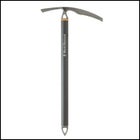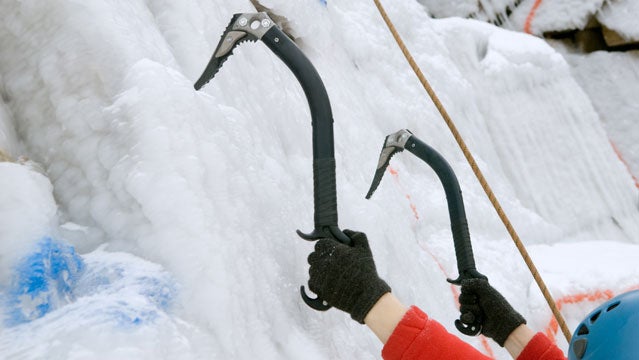The short answer is this: For all-around mountaineering, you choose the length of the ice axe simply by grasping its head (adze end) as if you were about to go for a hike with it, and hold it, relaxed, at your side. The pointy end should be about at your ankle. It isn t a walking stick you ll be using it mainly when ascending moderately steep, or steep, snow and ice, and you want it short enough so that you can reach up-slope and plant it without having to reach over your head to do so. Similarly, the correct length facilitates using the ice axe in self-arrest, or as a swing tool on steeper slopes, or when chopping hard snow and ice to create a tent or resting platform.
Black Diamond Raven ice axe
 Raven ice axe
Raven ice axeSo that’s a pretty easy decision. And, realistically, so is picking a specific model of axe. They need to have pointy ends and sturdy construction, otherwise, ice axes aren t especially techy pieces of gear. Black Diamond s Raven ($70; www.bdel.com) is a fine, all-purpose ice axe, with a strong but light aluminum shaft. REI s Brenva ($75; www.rei.com) is worth a look. You know, the first item REI sold was an ice axe. They were $3.50 – big money in the 1930s. If you really intend to do some steep stuff, then Petzl’s Cosmi tec ice axe ($140; http://en.petzl.com) has a curved shaft that gives a bit better clearance when swinging above your head. But really, that s probably more than you need.


